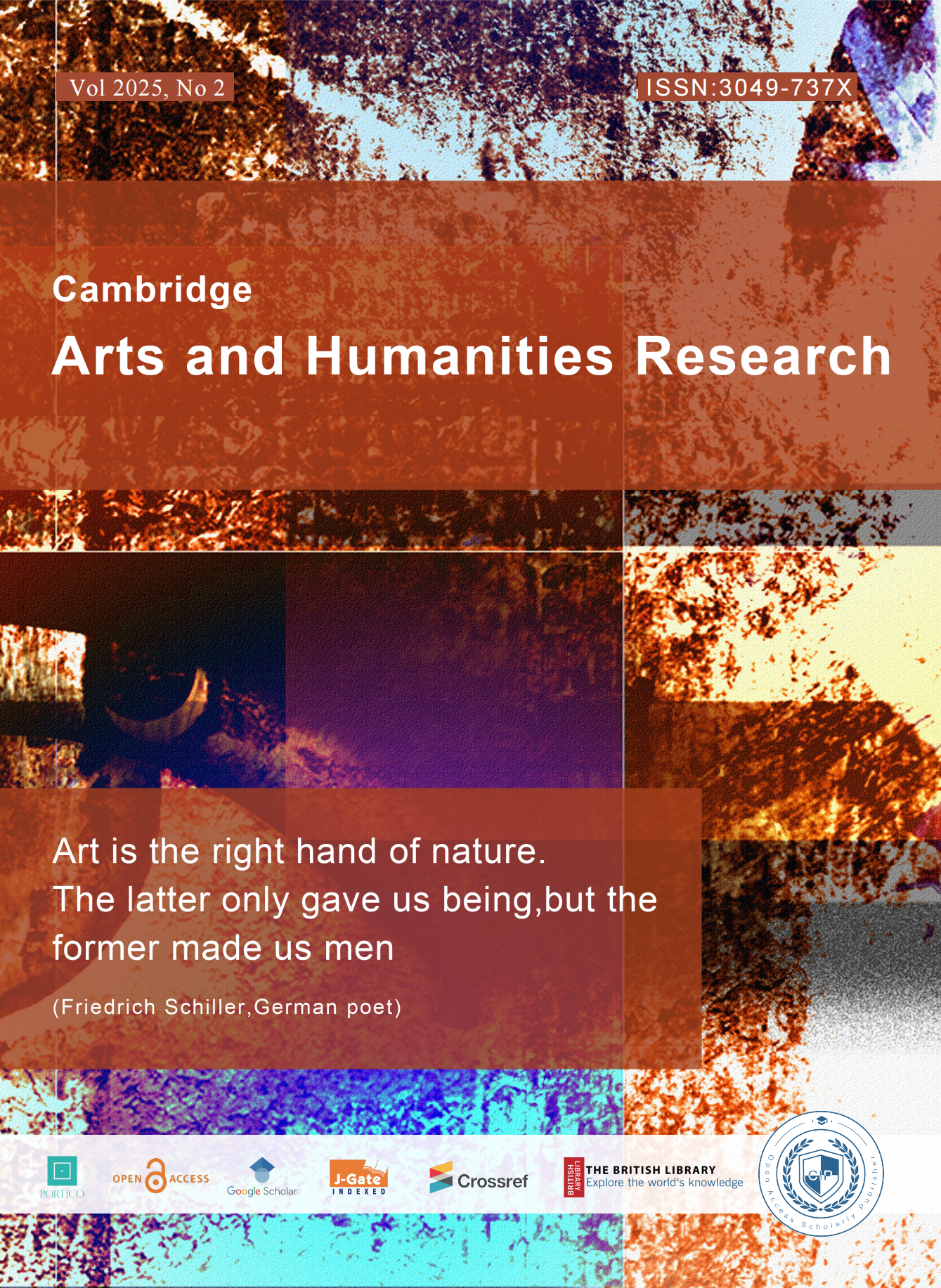Published 18-03-2025
Keywords
- Aesthetic conception,
- Color relationships,
- Chinese painting,
- Interplay of reality and void,
- Artistic innovation
Copyright (c) 2025 Cambridge Arts and Humanities Research

This work is licensed under a Creative Commons Attribution-NonCommercial 4.0 International License.
Abstract
This paper explores the expression of aesthetic conception in Chinese painting, with a particular focus on the significant role of color relationships in creating artistic conception. As the highest pursuit in Chinese art, aesthetic conception emphasizes transcending the form itself through the interplay of reality and void, thereby conveying the vitality of life and boundless sentiments. Traditional Chinese painting often employs "leaving blank" to express this conception, while contemporary painters are beginning to explore scientific color relationships to achieve a vivid and dynamic effect. The paper analyzes the aesthetic value of various color contrasts (such as hue contrast, complementary contrast, light and dark contrast, warm and cool contrast, and color area contrast) in creating aesthetic conception, combining ancient Chinese painting practices with Western color theories. It concludes that rich color relationships can better express the interplay of reality and void. Finally, the paper emphasizes that color, as a visual symbol, can serve as a means of personalized expression for painters and offers a new direction for the innovation of contemporary Chinese painting.

